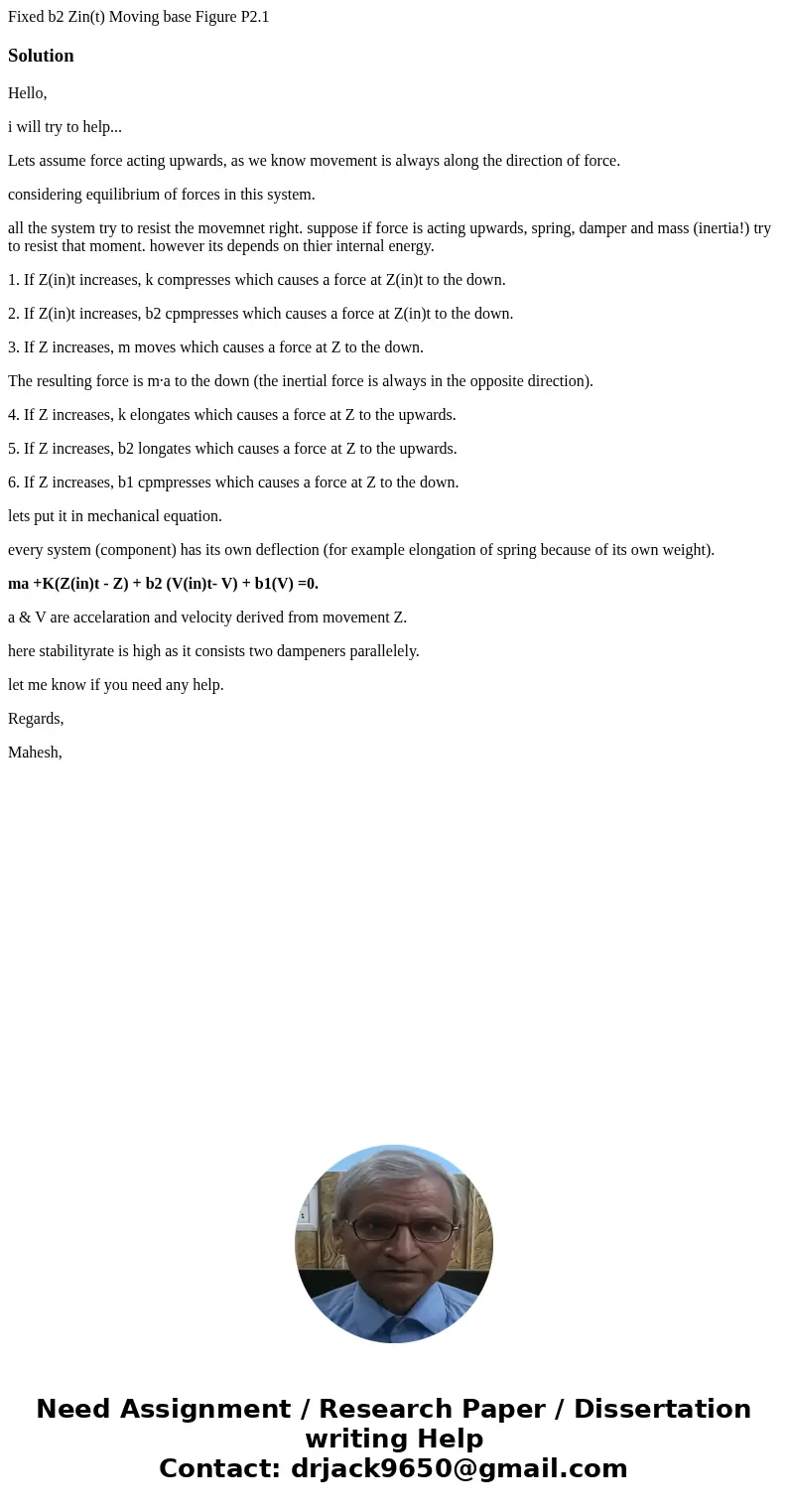Fixed b2 Zint Moving base Figure P21 SolutionHello i will tr
Solution
Hello,
i will try to help...
Lets assume force acting upwards, as we know movement is always along the direction of force.
considering equilibrium of forces in this system.
all the system try to resist the movemnet right. suppose if force is acting upwards, spring, damper and mass (inertia!) try to resist that moment. however its depends on thier internal energy.
1. If Z(in)t increases, k compresses which causes a force at Z(in)t to the down.
2. If Z(in)t increases, b2 cpmpresses which causes a force at Z(in)t to the down.
3. If Z increases, m moves which causes a force at Z to the down.
The resulting force is m·a to the down (the inertial force is always in the opposite direction).
4. If Z increases, k elongates which causes a force at Z to the upwards.
5. If Z increases, b2 longates which causes a force at Z to the upwards.
6. If Z increases, b1 cpmpresses which causes a force at Z to the down.
lets put it in mechanical equation.
every system (component) has its own deflection (for example elongation of spring because of its own weight).
ma +K(Z(in)t - Z) + b2 (V(in)t- V) + b1(V) =0.
a & V are accelaration and velocity derived from movement Z.
here stabilityrate is high as it consists two dampeners parallelely.
let me know if you need any help.
Regards,
Mahesh,

 Homework Sourse
Homework Sourse